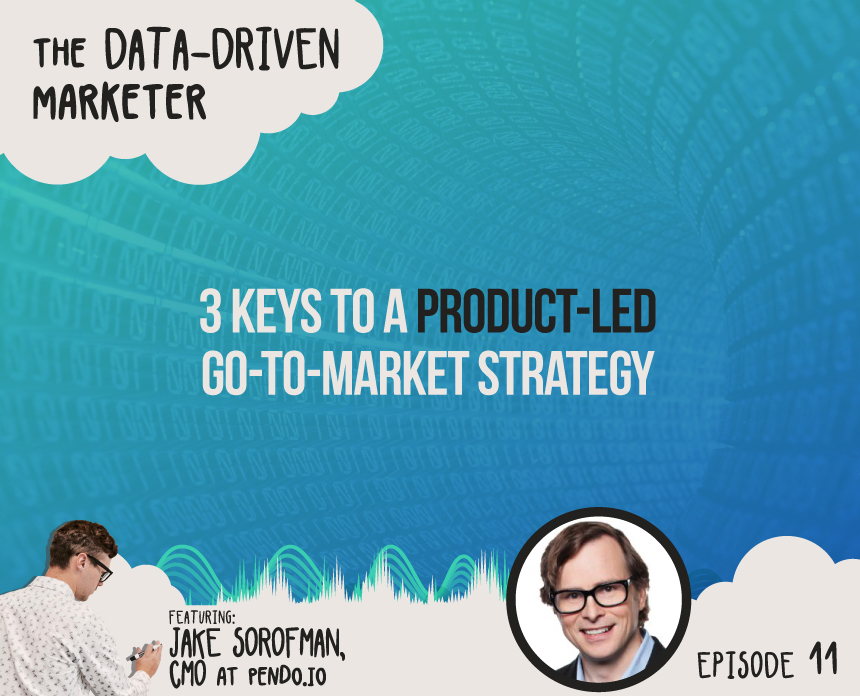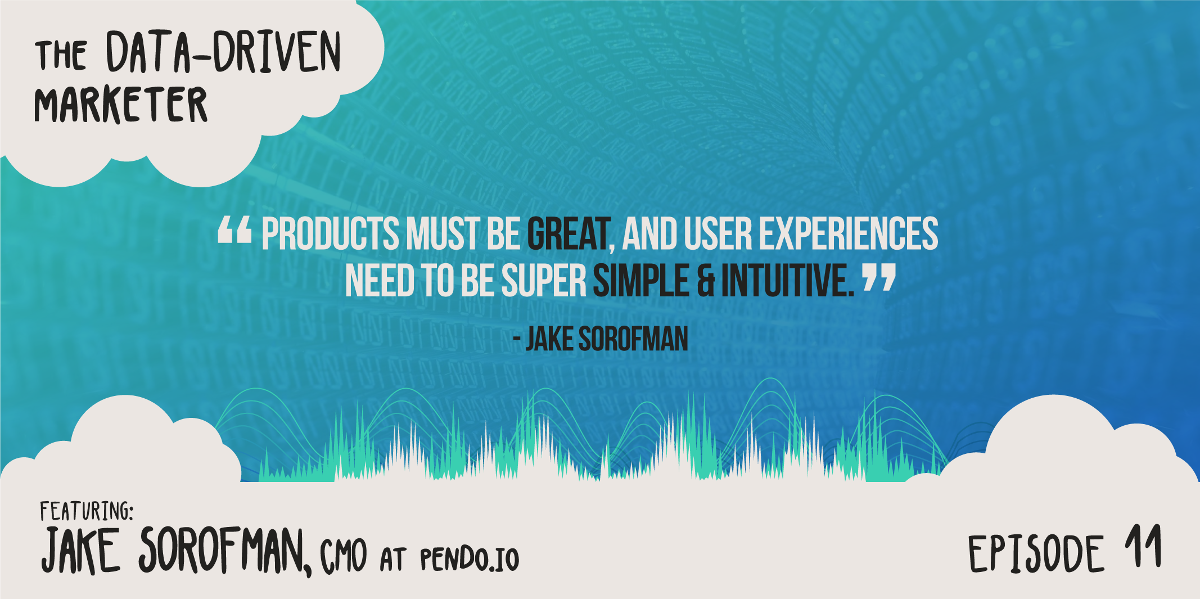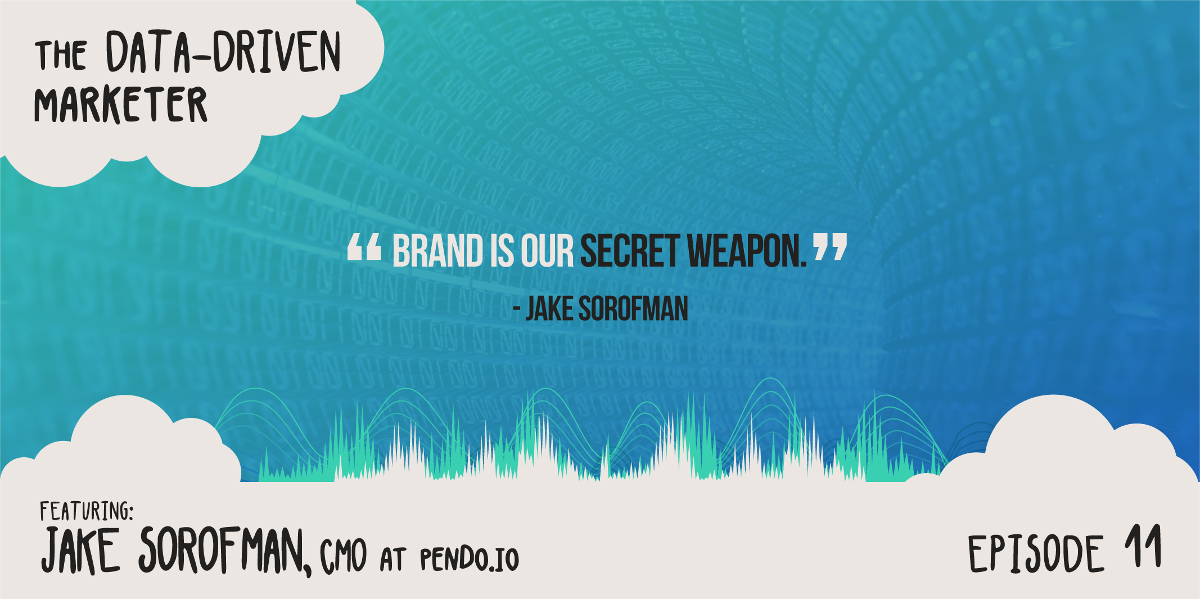
3 keys to a product-led go-to-market strategy
After spending some time with Jake Sorofman, one thing becomes super obvious: He really believes in what he’s doing.
And that’s why Pendo wanted him as their CMO, because they have a similar, simple philosophy, based on their passion:
Build the world’s greatest tool for product teams. The rest will follow.
And it did.
To the tune of $206MM in VC funding.
Needless to say, we took notice of what they’re doing over at Pendo. I wanted to know:
What makes their product so successful?
What does Jake have to say about successful marketing?
How can other companies replicate Pendo’s success with their product-led go-to-market strategies?
Jake answers these questions and more on our latest Data-Driven Marketer podcast, and we capture all the highlights from that interview below:
1) Focus on your fanbase. The rest will follow.

When Pendo first got started (in 2014), VCs were concerned about the marketability of
the product. They knew Pendo’s target market—product teams—didn’t traditionally own their own budget.
VCs were skeptical: “Product teams have $0 budget”
But Pendo’s founders were all product managers and product execs—they knew what they wanted to build, and they knew who they wanted to build it for: product teams.
Plus, they had the foresight to bank on two key elements:
- Pendo founders believed that, in the near future, product teams would have more discretionary buying power
- They knew the problem product teams were facing was real (and acute) enough that they would find the budget when necessary
They were right. And their focus on product teams came with a bonus: every other team became interested as well.
After focusing on their fanbase, every other team became interested
By focusing on their target customers, Pendo developed a tool that was so helpful, that sales, marketing, and customer success also wanted access.
Pendo’s value prop is pretty simple: improve the world’s experiences with software. They create tools that helps product teams understand how customers are interacting with their software, guide customers through onboarding, and then roll all of that up into analytics that product teams can use to further enhance their offerings.
Because Pendo’s product brings such high visibility to the way customers engage with software, every other team wanted access to it:
- Sales wanted access to score leads
- Marketing wanted to identify power users, use cases, and personas, so they could cross-sell and up-sell
- Customer success wanted access because they knew that product usage is a predictor of churn
2) Don’t stop at a widget. Build a community.
As B2B (and B2C) marketers know, a community can be a game-changer for your brand. You don’t want to stop at having a product, a tool, a system, or a platform for your buyers. You want to transform your industry by providing a community, a landing pad, if you will, for those buyers (which then convert to fans).
Here’s a few ideas for product-led go-to-market strategies, borrowed from Pendo:
- Start a user conference. They call theirs “Pendomonium.” Clever, right?
- Go big with your content marketing. Pendo started an entire publication site just for content related to their space, where they publish five to six pieces of original content each week.
3) Invest heavily in brand.

Companies often underinvest in brand. There are 2 reasons for this:
- Philosophy. Essentially, some businesses don’t truly believe in the overwhelming power of brand.
- Practical. Budgets are limited, and revenue-generating marketing activities compete with—and often win—the available dollars. When this happens, “demand gen is always going to win,” Jake noted.
As CMO, Jake believes heavily in brand, eliminating the first issue (philosophy). And diversifying his budget, secondly, by dividing it between demand gen and brand.
So at Pendo, Jake jokingly notes, they’re nearly “over-invested” on brand, but he quickly corrects himself: There’s really no such thing. By being very thoughtful about how they express their brand across venue and focusing on consistency and coherency, Pendo now has over 1,600 customers with 400 employees spread across 6 offices.
I think they’re doing something right.
For more interviews from the Data-Driven Marketer podcast, check us out on Apple Podcasts, or at this link.

Leave a comment